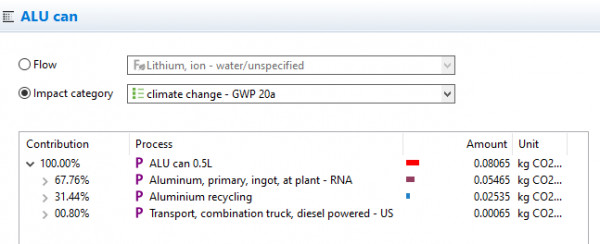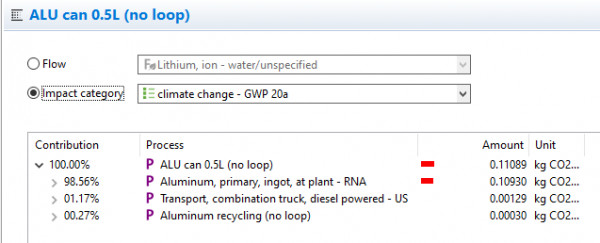In the tutorial, section 3.4 and 3.5, a method that two ALU flows are created and allocated as 0.5 each was introduced. However, the reason for that was not explained. It looks like a closed loop system but I still do not get the why it works.
I also tried to establish another cut-off model which does not contain a loop based on the case study. Instead of allocating half of the burden to the "ALU can 0.5L", I leave all the burden to the "ALU reference". The results are very different then.

fig. 1 the result of the case study

fig. 2 the "no loop" model result I got
I wonder if someone have studied the case and can share some thoughts about that.
Many thanks in advance.